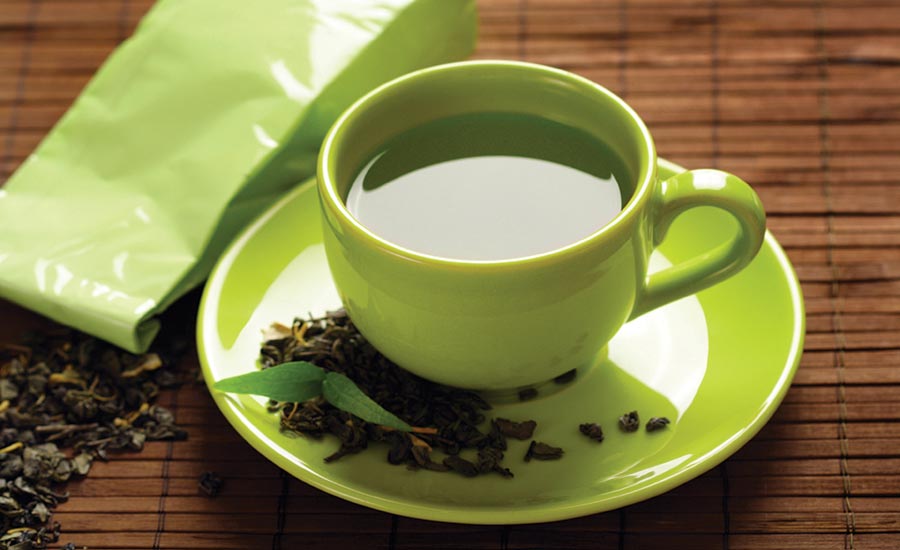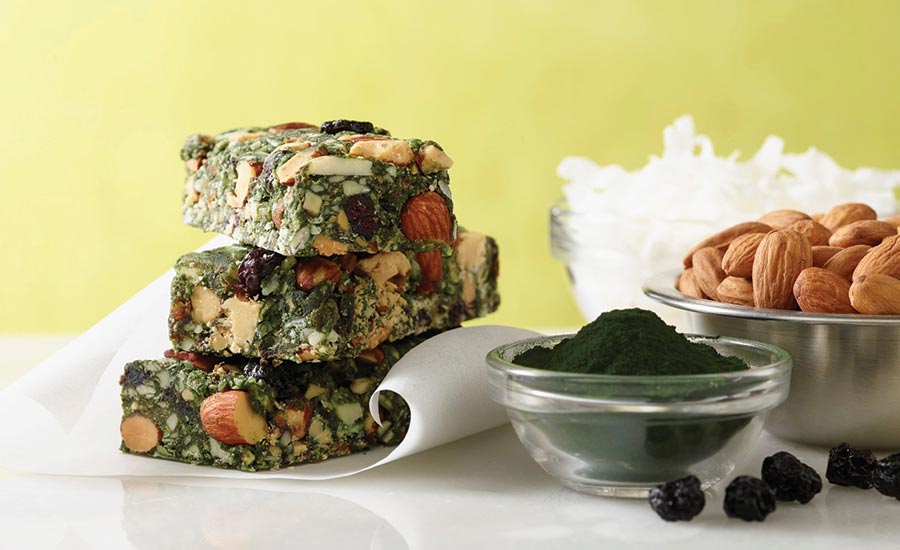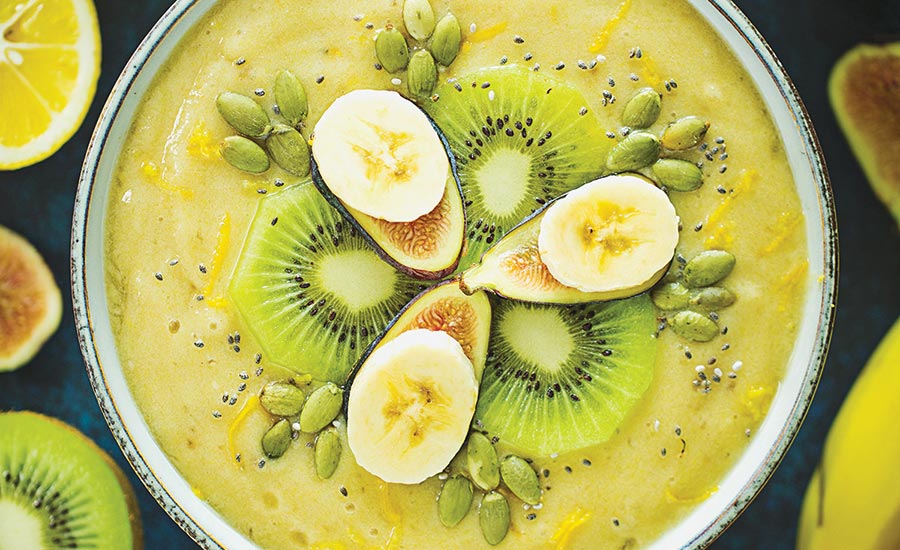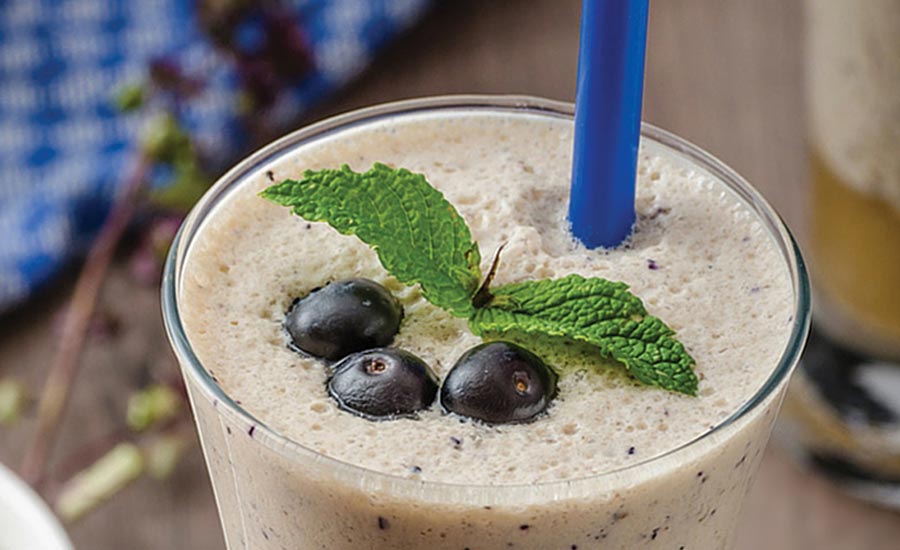The immune system recognizes harmful substances and protects the body from pathogens, cancer, heart disease, and other diseases while also helping regulate inflammation. In addition, it cleans up damage—whether from an injury or damaged muscle tissue due to lifting weights or just grinding through our daily routine.
Vitamins, minerals, beta-glucans, antioxidants, oligosaccharides (such as FOS, GOS, and inulin), probiotics, and plant compounds all do their part to help build the immune system and keep us active and replete with the energy needed to get through the day—and life,
Vitamins A, B6, C, D, and E play important roles in immune functioning. The majority of people get enough vitamin B6 and C. Vitamins A, D, and E, however, are shortfall nutrients—those that are a public health concern as they are widely underconsumed.
Supplements are one solution. However, during a period when consumers are in search of healthy, recognizable ingredients, turning toward food-based ingredients and fortification gives consumers an extra incentive to enjoy the product and get both what they want and what they need.
Big B
While all B vitamins are necessary to protect the body and support metabolism, vitamin B6 merits special attention for immunity. Also called pyridoxal phosphate, it promotes production of both the white blood cells and the signaling molecules in the immune system.
A deficiency of this vitamin directly impairs immune functioning. Excellent sources of vitamin B6 include chickpeas, beef liver, tuna, sockeye salmon, potatoes, bananas, and tomato paste.

Tea catechins prevent oxidation of fat in foods, and in the body work synergistically with cartenoids and vitamins C and E to help promote immune health.
PHOTO COURTESY OF: Taiyo International Inc. (www.sunphenon.com)
Despite the fact that people generally get plenty of vitamin C, formulators may want to add this vitamin due to significant losses during processing (both when making the food and at home). Vitamin C provides a “two-fer”: It modulates immune functioning and protects cells from free radical damage.
Whole, chopped, or puréed fruits, 100% fruit or vegetable juices, fruit bits and dried fruits can offer a vitamin C boost that comes in a package full of flavor and color. Excellent sources of vitamin C include sweet red or green pepper, orange juice, orange, grapefruit juice, kiwifruit, broccoli, Brussels sprouts, grapefruit, tomato juice, cantaloupe, and cabbage.
And while heat and dehydration can remove a good portion of C and other vitamins (especially the water-soluble vitamins), about 20% to 70% of vitamin content remains. Moreover, newer techniques in drying fruits and vegetables do preserve more of the vitamin content. Suppliers should be able to provide more detailed information about the nutrient content of these ingredients.
Sports Report
By Marie Spano, MS, RDN

PHOTO COURTESY OF: DuPont Nutrition and Health Inc. (www.dupont.com)
Formulating for energy and recovery meets two of the important needs for sports enthusiasts as well as for the casual exerciser. But the foods and beverages marketed for this niche also have proven to be highly attractive to the average Jane or Joe burning the candle at both ends without working up a sweat in the gym.
Fat-Soluble Solutions
Vitamin A deficiency impairs innate immunity by decreasing the functioning of neutrophils, macrophages, and natural killer cells. These are the body’s “soldiers” in its constant battle against disease. Ramping up vitamin A is easy, primarily through fruit- and vegetable-based ingredients including whole, chopped, or puréed fruits, 100% fruit or vegetable juices, fruit bits, and dried fruits.
Sweet potato, pumpkin, cantaloupe, sweet red bell peppers, mangoes, broccoli, apricots, and goji berries are all excellent sources of vitamin A. So, too, are meats (especially organ meats), dairy, and eggs.
Receptors for another fat-soluble vitamin, vitamin D, are found in most immune system cell types. Vitamin D deficiency is associated with an increased incidence of upper respiratory tract infections, as well as other systemic dysfunctions.

Purple, blue, red,and black fruits and vegetables are rich in polyphenolic compounds that stimulate nitric oxide production, helping with healthy blood flow and better energy.
PHOTO COURTESY OF: Welch Foods Inc./Welch’s Global Ingredients (www.welchsgig.com)
Additionally, several (although not all) clinical trials show vitamin D is beneficial for those with autoimmune disease. While future research hopefully will unravel the link between vitamin D and autoimmune disease, product developers can do no harm including this hormone-like vitamin in their formulations.
Estimates of vitamin D deficiency in the US population run as high as two-thirds of individuals. This creates a “prime time” opportunity for food and beverage manufacturers. Increasing vitamin D is tough given that it is found naturally in very few foods as aside from fatty fish and egg yolks. Therefore, fortification—as is done with most meat, dairy, and cereal products—can be the best option for this nutrient.
Mushrooms treated with ultraviolet light can provide up to 100% of the daily minimum requirement of the nutrient per 100g serving. Vitamin D-rich mushrooms have been widely available for a few years now, at close to the same cost as untreated mushrooms. But if processors have been using them in their formulations, they have yet to market those products as such.
Tocopherol, the most common form of vitamin E in prepared food products, protects cell membranes and is essential for immune system functioning. Top food-based solutions for adding vitamin E include wheat germ oil, sunflower seeds, almonds, sunflower oil, safflower oil, and hazelnuts. Peanuts, corn oil, and spinach are good sources of this nutrient as well, containing more than 10% of the daily value per standard serving.
A more powerful form of vitamin E, tocotrienol has demonstrated antioxidant capacity up to 400 times that of its sister form. Research studies support its ability not only to protect against cancer and other diseases but also to trigger self-destruction in certain cancer cells. The best food sources of tocotrienol are annatto, red palm oil, and rice bran oil.
Rock Solid
Iron and zinc are two minerals that are highly important for immune health. Zinc promotes wound healing and helps maintain skin integrity, one of the first lines of defense against pathogens.
This mineral is not stored in the body and must be consumed daily. Yet, excess zinc does more harm than good by suppressing immune system functioning by inhibiting macrophages and neutrophils.

Placebo-controlled studies show that beta-glucans, such as from brewer’s yeast, can help ward off infections and significantly reduce typical symptoms of a cold.
PHOTO COURTESY OF: Kerry Group Inc./Wellmune (www.wellmune.com)
A delicate balance is important so that one gets enough, yet not too much, of this nutrient. Good sources of zinc include spinach, asparagus, and shiitake and cremini mushrooms; good sources include quinoa, sesame seeds, pumpkin seeds, lentils, cashews, and garbanzo beans.
If formulating specifically for colds, zinc gluconate is the go-to version. Some studies show that zinc gluconate, taken within 24 hours of the onset of cold symptoms, could be helpful for decreasing the duration and severity of the symptoms.
Iron deficiency can disrupt immune system functioning, including the immune system’s response to infection and inflammation. Iron deficiency is the most prevalent nutrient deficiency worldwide. Approximately 16% of teenage girls ages 16-19 and 12% of women ages 20-49 are deficient in iron.
Iron fortification may be a consideration when developing foods and beverages formulated for vegetarians and females. Naturally good sources of iron include oysters, white beans, dark chocolate, sardines, kidney beans, ground beef, tofu, spinach, lentils, and chickpeas. Pairing plant-based sources of iron with vitamin C helps increase the absorption of this mineral.
Fibrous Benefits
For decades, our fiber intake hasn’t budged. Americans are getting only half of the dietary fiber needed each day for good health. Higher fiber diets are associated with smaller waistlines and they are protective against type 2 diabetes, cardiovascular disease, and colon cancer.
While fiber from fruits and vegetables works well, ingredients that have beneficial properties from a food science perspective help with both label claims and formulation.
Short-chain fructooligosaccharides (FOS) are mildly sweet, non-cariogenic, nondigestible carbohydrates that lend a sweet flavor while helping improve the texture of foods and acting as a source of dietary fiber. As prebiotics, FOS also stimulate the growth of beneficial bacteria in the gut, helping support a healthy immune system. FOS intake helps reduce constipation, increases calcium absorption in those with inadequate calcium intake, and stimulates production of Bifidobacteria.

Healthy fats, such as from high-MUFA nuts like almonds, combine well with mineral- and carotenoid-rich spirulina and tart dried cherries loaded with melatonin and anti-inflammatory compounds.
PHOTO COURTESY OF: Almond Board of California (www.almonds.com)
Inulin is also included as fiber on the nutrition facts panel and stimulates Bifidobacteria. Inulin has the potential to reduce traveler’s diarrhea, while a mix of FOS and inulin reduced pro-inflammatory markers in one study.
Although inulin is known for causing gas in some people due to incomplete digestion, long-chain inulin may alleviate this issue, as research shows it was well tolerated in 10g per day doses in adults.
Galactooligosaccharides (GOS) are another prebiotic fiber that beneficially affects immune functioning. Beta-GOS, when taken in relatively small doses of 5.5g per day, favorably affected immune functioning in elderly adults.
Americans still only get about half or less of their daily fiber needs.
In overweight adults, the B-GOS didn’t have as significant an effect on altering gut bacteria. However, beta-GOS intake helped reduce markers of inflammation, improved intestinal barrier functioning, and positively modulated immune functioning.
Stress can wreak havoc on the body, increasing one’s risk for everything from the common cold to heart disease. The body can get an additional boost from beta-glucan. Research shows that brewer’s yeast derived (1,3)-(1,6)-β-glucan reduced excess permeability of the small intestine due to stress-induced mast cell activation.
The integrity of the intestinal barrier is critical, as it protects the body from harm due to microorganisms and toxins. Beta-glucans from fungi and yeast support immune system functioning and could help reduce the incidence of upper respiratory tract infections.
Beta-glucans can be formulated into a variety of beverages and foods. A fermented yeast beta-glucan could also improve aspects of immune function, while decreasing the incidence of colds.
Plant Power
Specific plants and plant compounds hold promise for their ability to calm down inflammation and support healthy blood flow, both of which can factor into immune health. Though much is still unknown about the actions of many plant compounds, there are a few that stand out in the literature.
Dark red, black, and purple plant foods—including black rice, berries, and beets—are rich in polyphenolic compounds that stimulate nitric oxide production, allowing for healthy blood flow. Tart cherries, ginger, curcumin, açai, and asthaxanthin inhibit Cox-1 and/or Cox-2 enzymes, thereby helping tame inflammation. Red amaranth, too, is becoming increasingly recognized as beneficial for both inflammation reduction as well as nitric oxide production to benefit cardiovascular health.

Studies have demonstrated that probiotics, already favored for supporting immune health through better digestion, can also help contribute to a healthier waistline.
PHOTO COURTESY OF: Next Foods Inc. (www.goodbelly.com)
Two bioactive compounds in licorice, glycyrrhizin and glycyrrhetin, have anti- inflammatory activity. The strong flavors and unique notes associated with many of these ingredients and foods means they have great potential for use in a variety of food and beverage applications.
Pairing some of them will lead to a synergistic effect for both taste buds and beneficial pathways in the body, supporting enhanced blood flow and lower levels of inflammation.
Speaking of foods that come from the ground, spices enjoy a connection to immunity and healthy living that stems from ancient times. Cloves, chili peppers, nutmeg, and turmeric all have evidence to support their strong antimicrobial and antiviral properties, as well as their anti-inflammatory capacity. Each one also contributes great flavor without added sugar, making them ready ingredients for food and beverage formulators.
Interest in cinnamon stems from its ability to help support healthy blood sugar levels while lending desirable taste characteristics without added sugar or fat. Cinnamon blends well with a variety of natural fruit and vegetable flavors and other spices. The spice also works well in tandem with either sweet or savory flavors.
Promising Probiotics
In addition to their effects on gut and immune health, emerging research suggests a healthy gut means a healthier respiratory system. A meta-analysis found that probiotic treatment, specifically Lactobacillus and Bifidobacterium strains, compared to placebo, resulted in a decrease in average length of respiratory illness episodes and fewer days absent during illness. Clinical trials support the use of a number of probiotic strains.
Elite male distance runners who took a daily dose of Lactobacillus fermentum reported significantly fewer sick days and decreased severity of respiratory illness, compared to those taking a placebo. Likewise, highly active individuals who took Lactobacillus casei shirota daily for 16 weeks experienced fewer upper respiratory tract infections than those receiving a placebo.

The synergy between pre- and probiotics (such as guar gum and Bifidobacterium lactis) helps boost the function of the primary immunity organ, the digestive system.
PHOTO COURTESY OF: Regular Girl (www.regulargirl.com)
While many probiotics don’t survive digestion, Bacillus coagulans is a commonly used probiotic that can survive not only the heat and pressure of processing but also the acidity of the stomach to reach the g.i. tract, where it proliferates.
Studies in vitro found that B. coagulans altered the production of both immune-activating and anti-inflammatory cytokines and chemokines. By upregulating a growth factor in the body, this strain also seems to play an important role in tissue repair after trauma or surgery.
Formulating for today’s consumer means adding recognizable ingredients that deliver taste, functionality. and health claims. A wide variety of plant-based compounds including spices have a well-deserved health halo around them. Using these ingredients to improve the nutrition profile of foods and beverages provides consumers with what they want and need.
As gut health moves to the forefront of consumers’ minds, products with probiotics—including non-traditional ones enhanced with active probiotics, such as baked snacks, fruit juices, fermented beverages, chocolates, and others—open up the taste profiles in this category. Pairing the food for bacteria, prebiotics, with probiotics creates a winning situation to stimulate the growth of a healthy population in one’s gut.
Since the majority of the immune system is located in the gut, and the gut also affects brain functioning, focusing on the gut will have a tremendous impact on overall physical and psychological health.
Originally appeared in the June, 2018 issue of Prepared Foods as Building Immunity.

